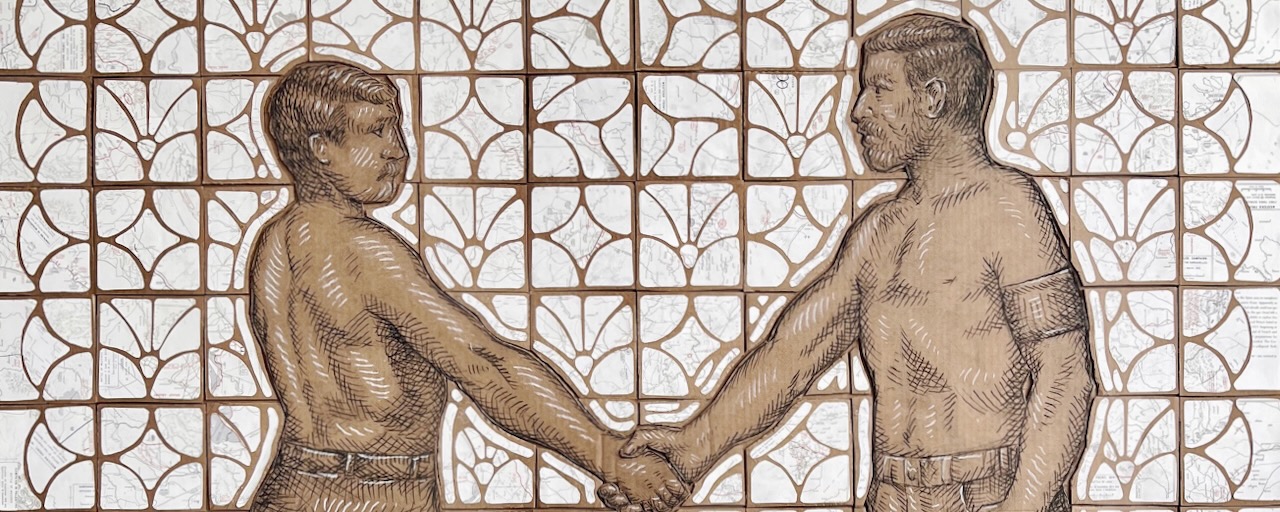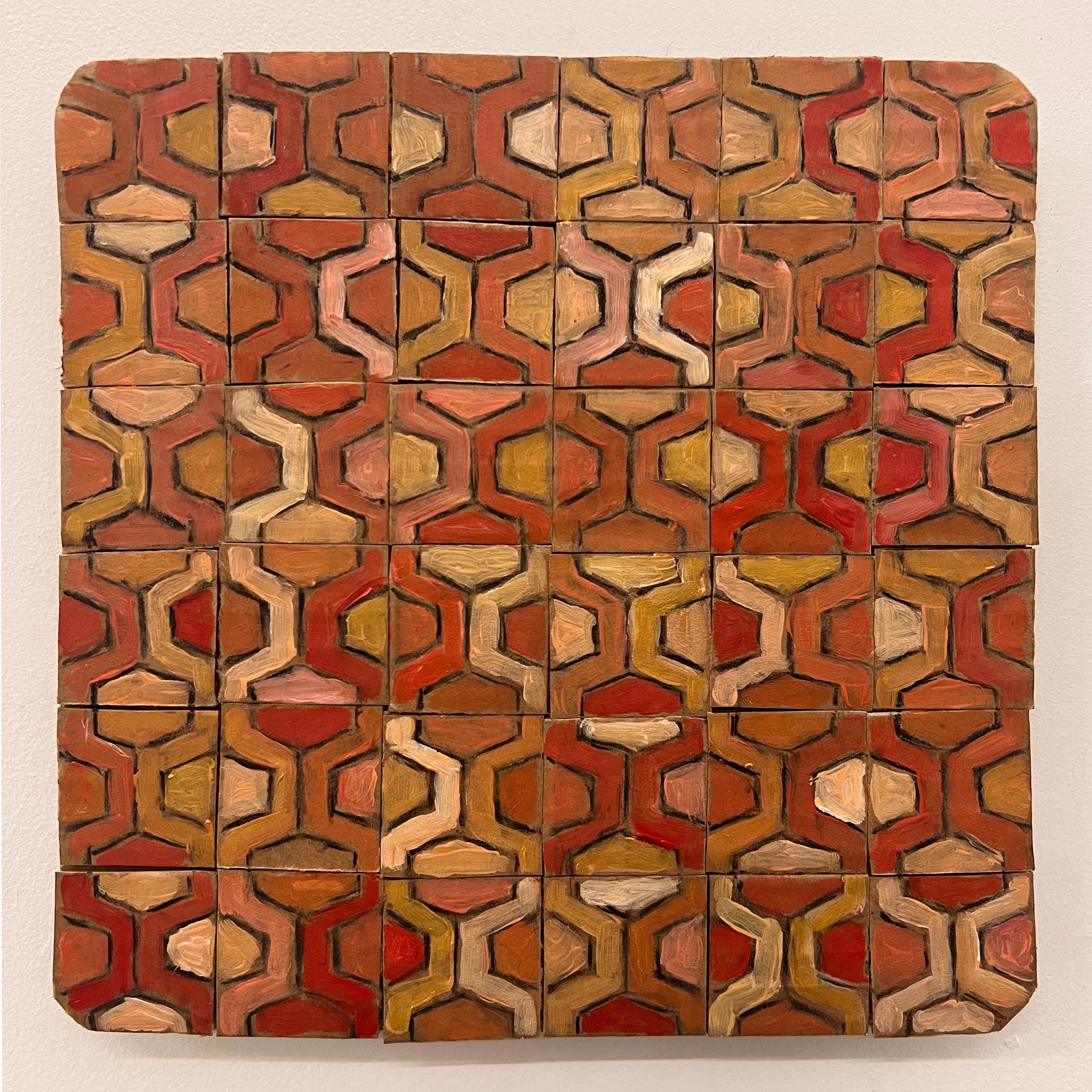
Through my work I reflect on the impact humanity has had on our planet and how our beliefs, our values and our actions have progressively and irreversibly transformed the world around us. As much as possible, I work with repurposed and recycled materials and found images in different scales and combinations in temporary arrangements; the materials themselves represent acts of ongoing transformation.
For my 2018 work, I installed over 500 pieces of cardboard, with a river of earth color pieces running from one edge to another representing the Rio Doce in Brazil, which was impacted by a 2015 mining accident. Also represented is a member of an indigenous tribe heavily impacted by the disaster, the names of some of the people killed in the town that was overrun with mud from the dam, and quotes from Shirley Krenak, a leader of the Krenak indigenous people.

On 5 November 2015, a mine dam holding back waste from an iron mine in the southeast of Brazil collapsed, releasing 62 million cubic meters of mining waste. The toxic mud destroyed hundreds of houses, took the lives of 19 people, and left hundred without shelter in the city of Mariana.
“For many people, it was just water running there, but for my People, it was Krenak, a brother who took care of our health, our religion, our culture. And Vale, this evil company, killed it. What saddens me the most is that my people, for several years, had been warning the society about the atrocities being done to our river, but no one listened to us.”
Shirley Krenak, a leader of the Krenak indigenous people in Minas Gerais, Brazil
Two hours after the collapse of the dam, the waste reached Rio Doce, an important river which thousands of people in the region depend on for their livelihood. The waste was dragged by the river for several days, finally reaching the ocean on October 22, 2015 where it spread out for more than 20 kilometers.

“I learned how to swim with my father, in the Doce river. Today, my children have to swim in a water tank. But this company will not put an end to my people, no. As time goes by, we become more resistant.”
Shirley Krenak, a leader of the Krenak indigenous people in Minas Gerais, Brazil

From the 80 species of fish that existed in the river, 12 were endangered, and other 11 existed only in that region and may be extinct. The toxic waste also affected the only regular place where the leatherback sea turtle goes to lay eggs in the Brazilian coast. The effects of the tragedy on the region’s ecosystem are still unraveling, and environmentalists believe that the toxic waste will affect the region for at least 100 years.




